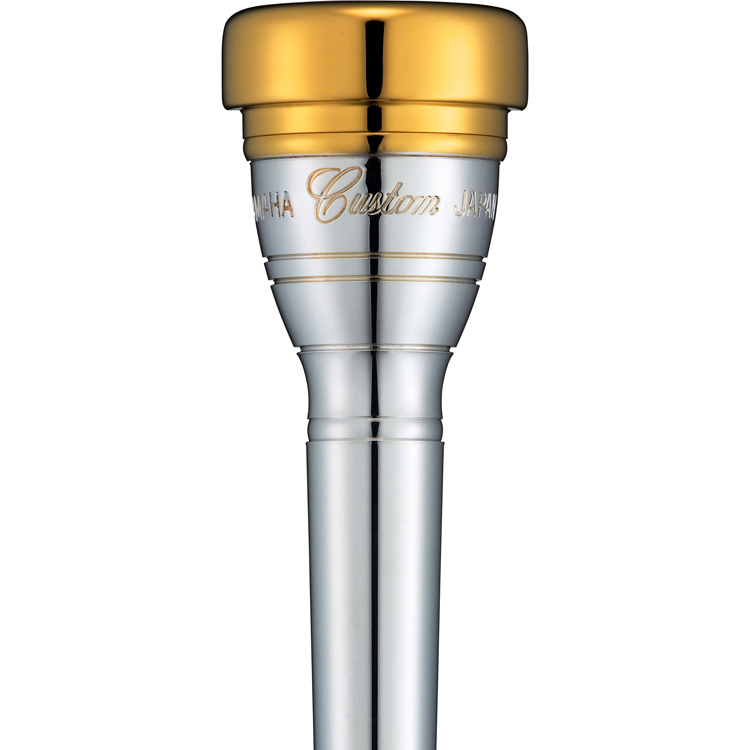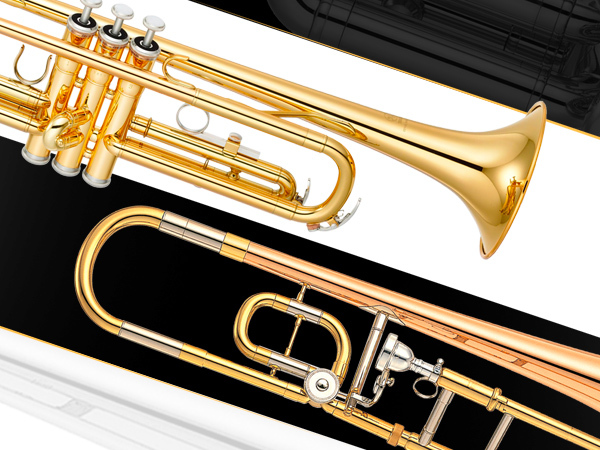Guide to Brass Mouthpieces, Part 4: Weights and Finishes
Are they just cosmetic, or do they change the sound too?
(This is the final installment in our four-part series about brass mouthpieces.)
In Part 1 we talked about choosing the right mouthpiece for your needs.
In Part 2 we explored the impact of the mouthpiece cup and rim dimensions.
In Part 3 we examined how the hidden dimensions of the throat and backbore affect the sound and feel of the instrument.
So far we’ve looked at the obvious physical characteristics of mouthpieces — the various shapes, sizes and cuts that most players focus on when deciding what to use. But there are other aspects of a mouthpiece that may also affect the sound and feel, including the underlying material, the overall weight and mass, and the external finish. While the impact of these features may be less dramatic than the size of the cup or the openness of the backbore, they are still important to consider in your search for the perfect fit!
Material
The vast majority of brass instrument mouthpieces today are made from — you guessed it — brass! Brass is relatively easy to work with and has acoustic properties that make it an obvious choice as the base metal. If you’re a brass player, chances are most of the mouthpieces you’ve ever played are primarily brass underneath their shiny silver exterior. But brass isn’t the only option. While not especially common, it is possible to make mouthpieces from any number of different materials, each of which will have a different impact on the sound, feel and responsiveness.
Some older mouthpieces, especially French horn mouthpieces, were made from nickel silver. This is a very hard material compared to brass, which tends to keep more of the energy from your lip buzz focused into the instrument (instead of being partially absorbed by the mouthpiece itself). The resulting sound was generally considered to be more powerful, but also very bright and cutting. Some more modern mouthpieces have been made from other “hard” metals similar to this, such as stainless steel and even solid Sterling silver, both of which tend to provide similar powerful but brilliant-sounding results.
Other manufacturers have experimented with completely different materials, including various types of woods and plastics. These mouthpieces tend to have opposite characteristics from the hard metal options, with sounds that are perhaps less powerful or brilliant, but with a warmer tone. Non-metal mouthpieces also have some advantages in extreme weather conditions, since they are less likely to freeze or burn the lips in very cold or hot environments. Some players may feel that these mouthpieces are more comfortable on the face, especially during extended playing sessions, and they also provide an option for anyone who is allergic to metals or finds that their skin is easily irritated by regular mouthpieces.
Weight and Mass

When compared to a standard mouthpiece, a mouthpiece that has extra material added to make it heavier will generally have a more focused and powerful sound, but without as much of the cutting brilliance you’d find if it had been built using a harder metal. This can be especially useful for players who need to make their sound project without the benefit of microphones or amplification, but want to preserve a warm tone quality. The trade-off for this extra potential power may be slightly reduced flexibility and agility, so articulations and lip slurs might require some extra effort.
This extra weight is commonly added to the back of the cup and around the throat, giving these types of mouthpieces an unmistakable profile. If you’re trying to be heard over a 50-piece string section and a regular mouthpiece isn’t getting the job done, a heaver mouthpiece may give you the extra boost that you need!
Finish
Silver plating is by far the most common finish for brass instrument mouthpieces. When properly applied, silver plating is extremely durable and will provide many years of reliable performance. Silver is also relatively affordable, keeping the overall cost of the mouthpiece reasonable.
A gold-plated finish will make a mouthpiece considerably more expensive, but there are some benefits that make this more than just a flashy luxury. For many players, a gold-plated rim and cup feel smoother and more slippery on the lips, with less of a grip on your skin than silver. This can actually help improve lip flexibility and control, and may be more comfortable if you play long sessions. Gold is also less reactive than silver, so it keeps its natural shine much longer without tarnishing. In addition, anyone that finds their skin breaking out in a rash with a standard silver-plated mouthpiece may find that gold plating alleviates that kind of allergic response (although if you think you’re having an allergic reaction it’s always best to check with your doctor!)
One thing that a gold-plated finish probably WON’T do is change your sound. It’s a common misconception that gold plating makes a mouthpiece sound darker or gives the player a warmer tone than silver, but the reality is that the very thin layer of gold has such a small impact on sound that for most players it’s essentially not an issue. The gold may FEEL more comfortable, and it’s a very impressive look to be sure, but if there’s a difference in sound from a silver mouthpiece, chances are it’s because some other characteristic has changed.
Click here to learn more about the extensive lineup of Yamaha mouthpieces.















